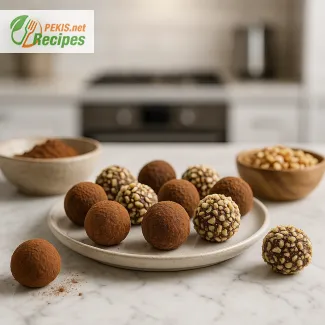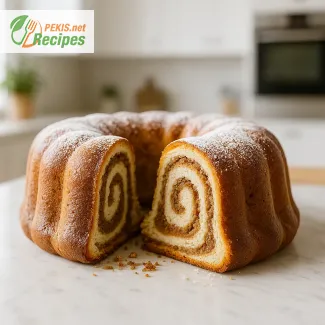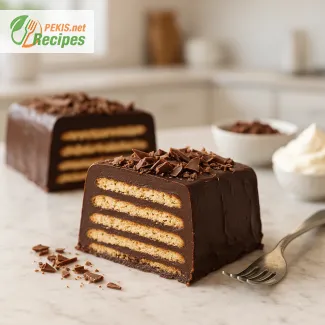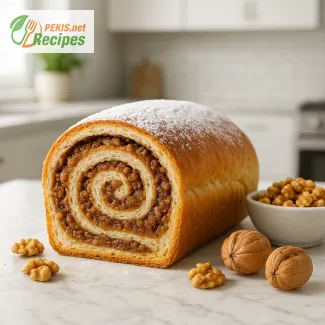
The Perfect Guide to Baking Salt Dough Ornaments
A Timeless Craft for Every Occasion
Salt dough ornaments have been a beloved tradition for generations, offering a fun, creative, and budget-friendly way to craft personalized decorations. Whether you're making holiday ornaments, keepsakes, or fun DIY projects with children, this simple mixture of flour, salt, and water transforms into beautifully hardened creations when baked properly. But achieving the perfect durability, texture, and color in your salt dough ornaments depends on one key factor—baking time.
Understanding the Baking Process
The baking process for salt dough ornaments is not just about hardening the dough—it’s about ensuring a long-lasting and crack-free finish. Many first-time crafters either rush the process, baking at too high a temperature, which can lead to puffing and cracking, or they underbake, resulting in ornaments that are too soft and prone to breakage over time.
When done right, salt dough ornaments can last for years, even decades, making them perfect for Christmas trees, personalized gifts, and DIY home decor. The key is to bake them low and slow, ensuring all moisture is removed evenly.
How Long Should You Bake Salt Dough Ornaments?
Baking time varies depending on thickness, size, and the temperature used. In general, most salt dough ornaments should be baked at a low temperature (90-120°C / 195-250°F) for several hours to ensure a thorough and even drying process.
- Thin ornaments (3-5 mm / ⅛ - ¼ inch thick) → 1.5 to 2 hours
- Medium ornaments (5-7 mm / ¼ - ⅓ inch thick) → 2 to 3 hours
- Thicker ornaments (7-10 mm / ⅓ - ½ inch thick) → 3 to 4+ hours
If your ornaments are on the thicker side, you may even consider air-drying them overnight before baking to prevent cracking.
Tips for the Perfect Bake
1. Roll Out Evenly
An even thickness ensures that all pieces dry at the same rate, reducing the risk of cracking or underbaked spots. A thickness of about ¼ inch (5-6 mm) is ideal for durability and even baking.
2. Use the Right Temperature
It’s tempting to crank up the heat for faster results, but high temperatures cause the dough to puff up, bubble, or crack. Keeping the oven at 90-120°C (195-250°F) allows the moisture to evaporate gradually, ensuring a strong and smooth finish.
3. Check for Doneness
Properly baked salt dough should feel completely hard and dry when tapped. If it feels soft in the center or slightly flexible, it likely needs more time.
4. Flip Halfway Through
For even drying, especially with larger or thicker ornaments, flipping them halfway through the baking time helps prevent curling and ensures both sides dry evenly.
5. Let Them Cool Naturally
Once baking is complete, let the ornaments cool on a wire rack to allow for proper air circulation. Cooling too quickly on a cold surface may cause cracking.
What If You Don’t Want to Bake?
For those who prefer not to use an oven, salt dough ornaments can be air-dried instead. This process takes 2-3 days but ensures an even, natural finish. Keep them in a warm, dry place and turn them occasionally to speed up drying.
Once your salt dough ornaments are baked and cooled, it’s time to add the finishing touches. Consider painting them with acrylic paints, adding glitter, or sealing them with a protective varnish to enhance durability and vibrancy.
With the right baking time and technique, salt dough ornaments can become cherished keepsakes that last for years to come. Whether you’re making holiday decorations, personalized gifts, or fun crafts with kids, following these simple steps will ensure your creations come out beautiful, sturdy, and perfectly preserved.
- In a mixing bowl, combine flour and salt. Mix well to evenly distribute the salt.
- Gradually add water, stirring continuously until the dough begins to form.
- Knead the dough for about 5-10 minutes, ensuring a smooth and pliable texture. If the dough feels too sticky, add a little more flour; if too dry, add a small amount of water.
- Roll out the dough on a lightly floured surface to approximately 5 mm (¼ inch) thickness.
- Use cookie cutters or hand-shape designs to create ornaments.
- Make a small hole near the top of each ornament using a straw or skewer for hanging later.
- Preheat the oven to 100°C (210°F).
- Arrange ornaments on a baking sheet lined with parchment paper.
- Bake for 2 to 3 hours, flipping them halfway through to ensure even drying.
- Check for hardness; ornaments should be completely dry and firm when done.
- Allow to cool completely before decorating with paint, varnish, or glitter.
Enhancing and Perfecting Your Salt Dough Ornaments
The Art of Crafting the Perfect Salt Dough
Salt dough ornaments are a timeless DIY craft, allowing for creativity, personalization, and long-lasting decorations. However, the process of making these ornaments involves more than just mixing flour, salt, and water—understanding how ingredient proportions, baking techniques, and finishing methods affect the final product is key to achieving durable, beautifully crafted ornaments.
Many factors, such as dough consistency, drying methods, and additional ingredients, can influence the texture, longevity, and appearance of the ornaments. By making small adjustments, you can create more refined, crack-resistant, and decorative salt dough pieces that will last for years.
Adjusting Ingredient Ratios for the Best Texture
The basic salt dough recipe consists of a 2:1:1 ratio of flour, salt, and water. While this is a well-balanced proportion for most ornaments, modifying these ratios can enhance durability, texture, and ease of use.
- For stronger ornaments: Increase the salt content slightly to reinforce the dough’s hardness and prevent breakage. Using 140-150 g (a little over ½ cup) instead of 125 g (½ cup) can improve resilience.
- For smoother dough: Add a small amount of vegetable oil (about 1 tsp per batch). This makes the dough more pliable, reducing cracks during drying.
- For a softer feel (for handprint ornaments): Reduce the salt slightly (to 100 g / just under ½ cup) to create a gentler texture on the skin.
Choosing the Right Type of Flour
The type of flour used plays a role in the dough’s elasticity and final texture. All-purpose flour is the most common choice, but using self-rising flour will cause the dough to puff up, which is undesirable.
- For finer details: Use cake flour or finely milled all-purpose flour to create a smoother, more detailed imprint.
- For a rustic effect: Whole wheat flour gives the ornaments a more textured, natural look, though it is slightly grainier and harder to paint smoothly.
Preventing Cracks and Puffing
One of the most common challenges with salt dough ornaments is cracking or puffing during the baking process. This happens due to moisture escaping too quickly or uneven drying.
- Bake at a lower temperature: Keeping the oven at 90-100°C (195-210°F) ensures the dough dries evenly without sudden expansion.
- Air-dry before baking: Letting the ornaments dry for 24 hours before baking minimizes internal moisture, reducing puffing and cracks.
- Roll evenly: Keeping the dough uniformly 5 mm (¼ inch) thick ensures consistent drying, preventing thinner edges from drying too fast and cracking.
- Flip halfway through baking: This allows both sides to dry evenly, reducing the chance of warping or curling.
Adding Extra Strength and Durability
If you want your ornaments to last for decades, a few extra ingredients can enhance their hardness and resistance to humidity.
- Cornstarch (20 g / 2 tbsp) added to the dough makes it firmer and more resistant to moisture absorption.
- Glue (1 tbsp of PVA or school glue) can help bind the dough more strongly, preventing it from becoming too brittle over time.
- Acrylic sealant or polyurethane varnish applied after baking creates a protective layer against humidity, ensuring longevity.
Enhancing the Appearance of the Ornaments
Salt dough ornaments are a blank canvas for creative decorations. By incorporating natural textures, colors, and finishes, you can achieve stunning, professional-looking ornaments.
- Adding color to the dough: Instead of painting the ornaments after baking, you can mix food coloring or acrylic paint directly into the dough for a more natural, embedded color.
- Marbling effect: Swirl in different shades of food coloring before rolling out the dough to create a unique marbled look.
- Embossed designs: Pressing lace, fabric, or textured stamps onto the surface before baking can add beautiful, intricate patterns.
- Shimmer and shine: Mixing fine glitter into the dough before rolling ensures an even sparkle without shedding.
Alternative Drying Methods for a Different Finish
Baking is the fastest way to dry salt dough, but alternative methods can create different effects:
- Air drying: Leaving the ornaments out for 2-3 days in a warm, dry place results in a slower, more natural curing process that prevents cracking entirely.
- Dehydrator drying: If you own a food dehydrator, setting it to a low temperature (50-60°C / 120-140°F) for a few hours provides even, controlled drying.
- Sun drying: Placing ornaments in direct sunlight during warm weather can work as an eco-friendly option, though it takes longer.
Sealing and Preserving for Long-Term Use
Proper sealing is essential for making salt dough ornaments last for years without absorbing moisture or crumbling.
- Use a waterproof varnish: Once completely dried and painted, applying a polyurethane or acrylic varnish protects against humidity and discoloration.
- Avoid water-based sealers alone: Water-based sealers can still absorb moisture over time, so combining them with an oil-based topcoat enhances protection.
- Store in a dry place: Keeping ornaments in airtight containers during humid months prevents softening and mold growth.
How Small Changes Make a Big Difference
By tweaking ingredients, adjusting drying methods, and enhancing decorations, salt dough ornaments can be stronger, smoother, and more visually stunning.
- Increase salt for durability, add cornstarch or glue for extra hardness
- Use air drying or flipping techniques to prevent cracks
- Embed colors, textures, and glitter into the dough for enhanced decoration
- Seal properly with varnish for long-lasting ornaments
Whether you’re making holiday keepsakes, personalized gifts, or decorative DIY projects, these improvements will ensure your salt dough creations are stunning, durable, and uniquely crafted to stand the test of time.
- This recipe contains gluten due to the flour.
- Salt content is high, making it inedible.
- No dairy, eggs, or nuts present, making it safe for common allergies.
Ingredient Substitutions for Allergy-Free Options:
- For a gluten-free version, substitute gluten-free all-purpose flour in a 1:1 ratio.
- Reduce salt if making ornaments for small children to handle, as excess salt can irritate skin.
- Calcium: 2 mg – Supports bone health.
- Iron: 0.2 mg – Helps with oxygen transportation in the blood.
- Magnesium: 1 mg – Assists muscle and nerve function.
- Potassium: 4 mg – Maintains normal cell function.
- Minimal antioxidants, as the ingredients lack natural sources.
- No significant impact on health since this recipe is not for consumption.





